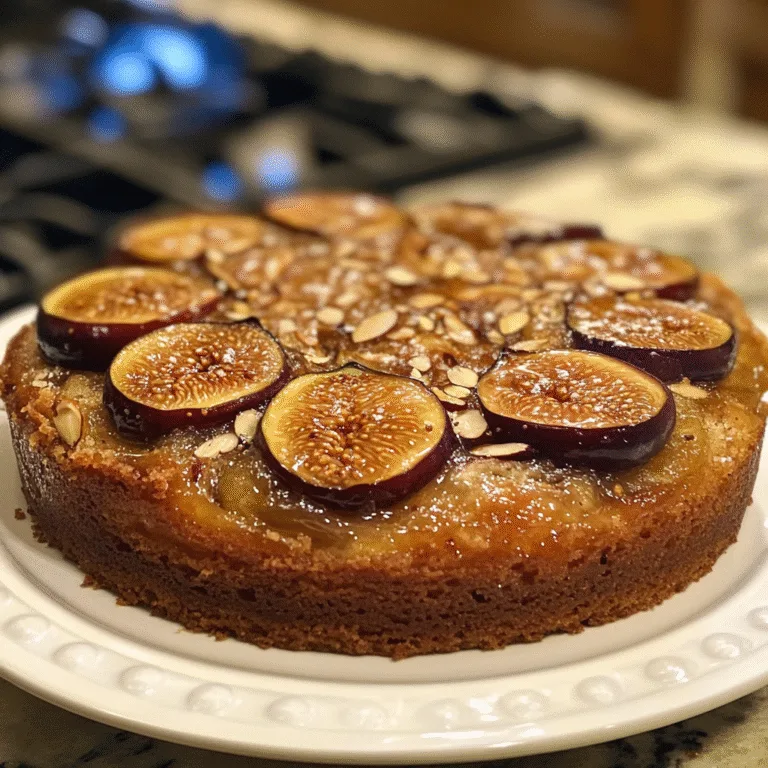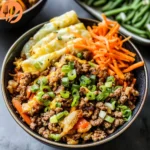Follow Me On Social Media!
Homemade Chicken Spring Rolls
Introduction
Did you know that spring rolls are consumed by over 1.4 billion people worldwide, yet less than 15% make them at home despite their incredible simplicity and health benefits? Most people assume that creating restaurant-quality Homemade Chicken Spring Rolls requires professional training or special equipment, but this couldn't be further from the truth. These delightful Vietnamese-inspired appetizers can be mastered in your own kitchen with just a few fresh ingredients and simple techniques.
Homemade Chicken Spring Rolls offer the perfect combination of fresh vegetables, lean protein, and aromatic herbs wrapped in delicate rice paper. Unlike their deep-fried counterparts, these fresh spring rolls are light, nutritious, and incredibly satisfying. Whether you're hosting a dinner party, looking for a healthy lunch option, or wanting to impress your family with your culinary skills, this recipe will become your go-to favorite. The best part? You have complete control over the ingredients, ensuring every bite is packed with flavor and nutrition.

Ingredients List
Creating perfect Homemade Chicken Spring Rolls starts with selecting the freshest, most vibrant ingredients. Here's everything you'll need for approximately 8-10 spring rolls:
For the Chicken:
- 2 boneless, skinless chicken breasts (about 1 pound) – substitute with cooked shrimp, tofu, or leftover rotisserie chicken
- 1 tablespoon olive oil
- 1 teaspoon garlic powder
- Salt and pepper to taste
For the Spring Rolls:
- 8-10 rice paper rounds (22cm diameter) – found in Asian grocery stores or online
- 2 cups mixed greens or butter lettuce leaves – crisp and fresh
- 1 large cucumber, julienned into thin strips
- 1 large carrot, julienned or thinly sliced
- 1 red bell pepper, thinly sliced
- 1 cup fresh cilantro leaves
- 1/2 cup fresh mint leaves
- 1/2 cup fresh Thai basil (or regular basil)
- 2 green onions, thinly sliced
For the Peanut Dipping Sauce:
- 1/3 cup natural peanut butter
- 2 tablespoons soy sauce – use tamari for gluten-free option
- 1 tablespoon rice vinegar
- 1 teaspoon sesame oil
- 1 teaspoon honey or maple syrup
- 1 clove garlic, minced
- 2-3 tablespoons warm water
- Red pepper flakes to taste
The beauty of fresh spring rolls lies in their versatility. Feel free to add bean sprouts, avocado slices, or even mango strips for extra flavor and texture.
Timing
Preparation Time: 25 minutes
Cooking Time: 15 minutes (for chicken)
Assembly Time: 20 minutes
Total Time: 60 minutes
This timing is significantly faster than most restaurant appetizers, which typically take 45-90 minutes from order to table. The hands-on preparation makes this recipe perfect for a cooking activity with family or friends.
Step-by-Step Instructions
Step 1: Prepare the Chicken
Season the chicken breasts with garlic powder, salt, and pepper. Heat olive oil in a medium skillet over medium-high heat. Cook the chicken for 6-7 minutes per side until the internal temperature reaches 165°F (74°C). Let it rest for 5 minutes, then slice into thin strips. The key here is to avoid overcooking – juicy chicken makes all the difference in your Homemade Chicken Spring Rolls.
Step 2: Prepare the Vegetables and Herbs
While the chicken cools, wash and dry all your vegetables and herbs thoroughly. Julienne the cucumber and carrot into matchstick-sized pieces. Slice the bell pepper into thin strips. Having everything prepped and organized (mise en place) makes the rolling process much smoother and more enjoyable.
Step 3: Make the Peanut Dipping Sauce
In a small bowl, whisk together peanut butter, soy sauce, rice vinegar, sesame oil, honey, and minced garlic. Gradually add warm water until you achieve a smooth, dippable consistency. Taste and adjust seasoning with red pepper flakes or additional honey as needed.
Step 4: Prepare Your Workstation
Fill a large, shallow dish with warm water. Lay out a clean, damp kitchen towel on your work surface. Have all your filling ingredients arranged within easy reach. This setup is crucial for efficient rolling and prevents the rice paper from drying out.
Step 5: Soften the Rice Paper
Dip one rice paper round in warm water for 10-15 seconds until it becomes pliable but not completely soft – it will continue to soften as you work. Place it on the damp towel. The rice paper should feel slightly firm to the touch; over-soaking leads to tears and sticky messes.
Step 6: Assemble Your Spring Rolls
Place 2-3 lettuce leaves on the lower third of the rice paper, leaving about 2 inches from the bottom edge. Add 3-4 strips of chicken, followed by cucumber, carrot, bell pepper, and a generous handful of fresh herbs. Don't overfill – this is the most common mistake that leads to bursting rolls.
Step 7: Roll Tightly
Fold the bottom edge of the rice paper over the filling, tucking it under slightly. Fold in the sides, then continue rolling tightly toward the top edge. The rice paper should seal naturally. Place seam-side down on a plate and cover with a damp paper towel to prevent drying.
Step 8: Repeat and Serve
Continue with remaining ingredients. Serve immediately with peanut dipping sauce, or refrigerate for up to 4 hours before serving.
Nutritional Information
Each Homemade Chicken Spring Roll (without sauce) contains approximately:
- Calories: 85-95
- Protein: 12g
- Carbohydrates: 8g
- Fat: 2g
- Fiber: 2g
- Sugar: 3g
These fresh spring rolls are an excellent source of lean protein and provide a significant amount of vitamins A and C from the fresh vegetables. The abundance of fresh herbs also contributes antioxidants and anti-inflammatory compounds, making this dish both delicious and nutritionally dense.
Healthier Alternatives for the Recipe
For Lower Calories: Replace chicken with extra vegetables, bean sprouts, or shiitaki mushrooms. Use a tahini-based sauce instead of peanut sauce to reduce calories further.
For Vegan Version: Substitute chicken with marinated tofu, tempeh, or additional vegetables like roasted sweet potato strips. Replace honey in the sauce with maple syrup or agave.
For Low-Carb Option: Use collard green leaves or butter lettuce leaves instead of rice paper. This creates a fresh lettuce wrap with all the same flavors.
For Gluten-Free: Ensure your soy sauce is gluten-free (tamari works perfectly) and verify that your rice paper doesn't contain wheat – most are naturally gluten-free.
Serving Suggestions
Homemade Chicken Spring Rolls pair beautifully with Vietnamese-inspired sides. Serve alongside a light cucumber salad with rice vinegar dressing, or offer multiple dipping sauces including sweet chili sauce, nuoc cham (Vietnamese dipping sauce), or a spicy sriracha mayo.
For beverages, consider serving with jasmine tea, coconut water, or a light white wine like Sauvignon Blanc. The fresh herbs and vegetables also complement Asian-inspired soups like pho or tom kha gai.
For a complete meal, serve 3-4 spring rolls per person alongside quinoa salad or Asian-style coleslaw.
Common Mistakes to Avoid
Over-soaking rice paper: This leads to tears and difficulty handling. Dip briefly and let it continue softening on your work surface.
Overfilling: Less is more with spring rolls. Overstuffed rolls burst and are difficult to eat.
Rolling too loosely: Loose rolls fall apart when picked up. Apply gentle but firm pressure while rolling.
Not keeping finished rolls covered: Exposed rice paper dries out quickly and becomes tough and chewy.
Using wilted herbs: Fresh, crisp herbs are essential for authentic flavor and texture.
Storing Tips
Refrigeration: Store completed Homemade Chicken Spring Rolls wrapped in damp paper towels in an airtight container for up to 24 hours. The rice paper may become slightly chewy, but they'll still be delicious.
Freezing: Fresh spring rolls don't freeze well due to the high water content in vegetables. However, you can freeze cooked chicken filling for up to 3 months.
Reheating: These are best served cold or at room temperature. If you must warm them, use a steamer for 30-60 seconds to refresh the rice paper without making it mushy.
Make-Ahead Tips: Prepare all filling ingredients up to 24 hours in advance, but assemble rolls no more than 4 hours before serving for best texture.
Conclusion
Homemade Chicken Spring Rolls prove that healthy, restaurant-quality food can be simple, affordable, and incredibly satisfying to make at home. This recipe combines fresh vegetables, lean protein, and aromatic herbs in a light, nutritious package that's perfect for any occasion. The hands-on preparation process is almost as enjoyable as eating the finished product, making it an ideal activity for family cooking sessions or entertaining guests.
Don't let the idea of working with rice paper intimidate you – with a little practice, you'll be rolling like a pro. The customizable nature of these spring rolls means you can adapt them to any dietary preference or seasonal vegetable availability.
Ready to impress your family and friends? Gather your ingredients and start rolling! Share your Homemade Chicken Spring Rolls creations on social media and let us know what creative fillings you discovered. Your taste buds (and your body) will thank you for choosing this fresh, healthy alternative to heavy appetizers.
FAQs
Q: Can I make spring rolls ahead of time for a party?
A: Yes! You can assemble Homemade Chicken Spring Rolls up to 4 hours before serving. Keep them covered with damp paper towels and refrigerated. For best results, prepare all filling ingredients the day before and assemble the morning of your event.
Q: Where can I buy rice paper if my local grocery store doesn't carry it?
A: Rice paper is available at most Asian grocery stores, health food stores, and online retailers like Amazon. Look for brands like Three Ladies or Spring Home. They're usually found in the international aisle or Asian food section.
Q: What if my rice paper keeps tearing while I'm rolling?
A: Rice paper tears most commonly when it's over-soaked or overfilled. Try dipping for a shorter time (just 10 seconds) and using less filling. The rice paper should feel slightly firm when you start rolling – it will continue to soften as you work.
Q: Can I substitute the peanut sauce with something else?
A: Absolutely! Try sweet chili sauce, hoisin sauce mixed with water, or make a simple dipping sauce with soy sauce, rice vinegar, and a touch of sesame oil. For nut-free options, tahini-based sauces work wonderfully too.












